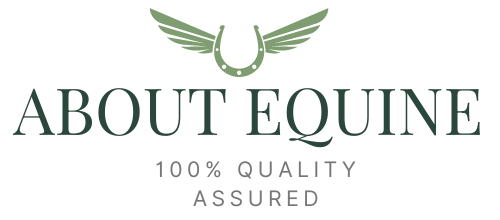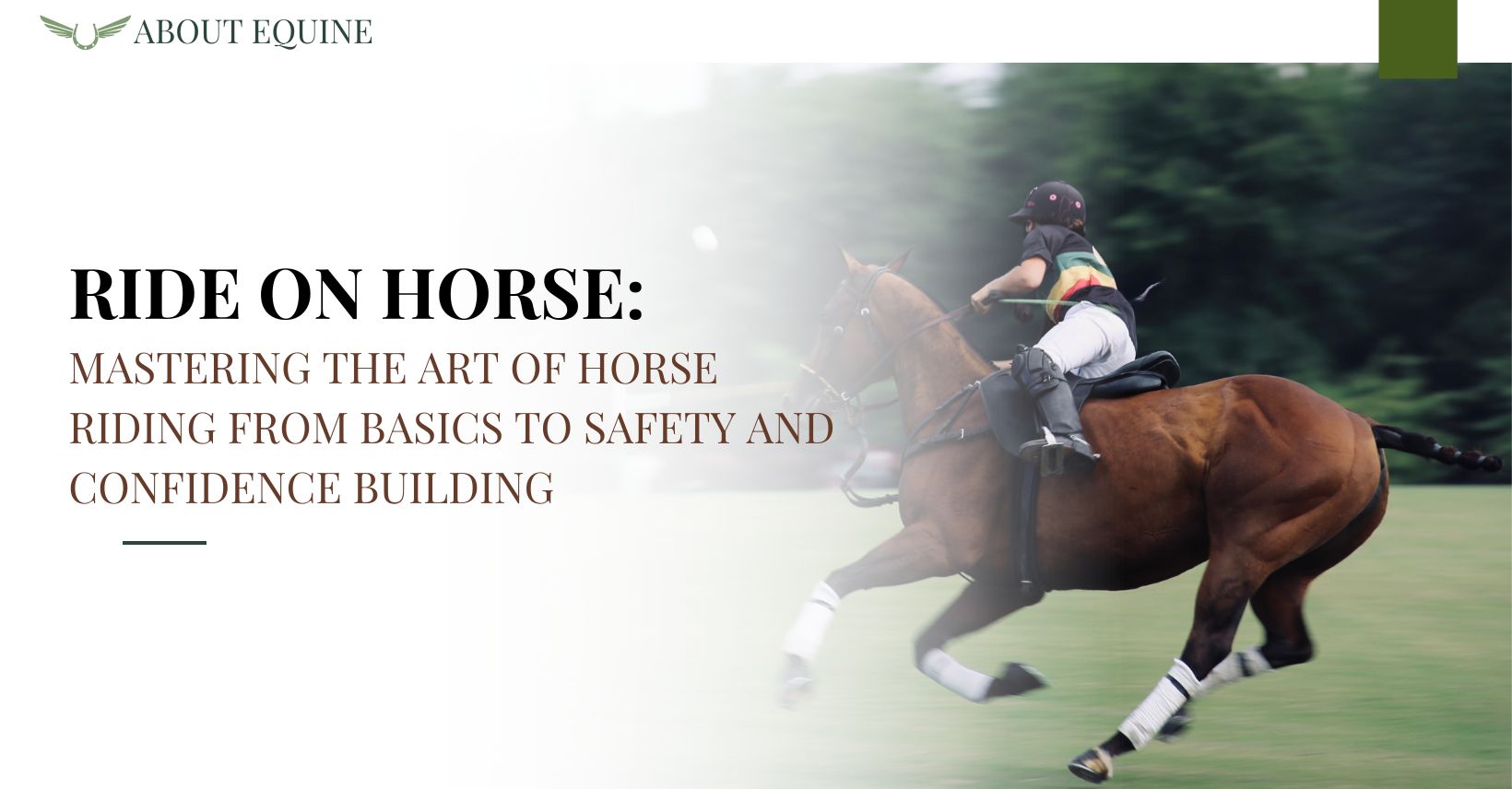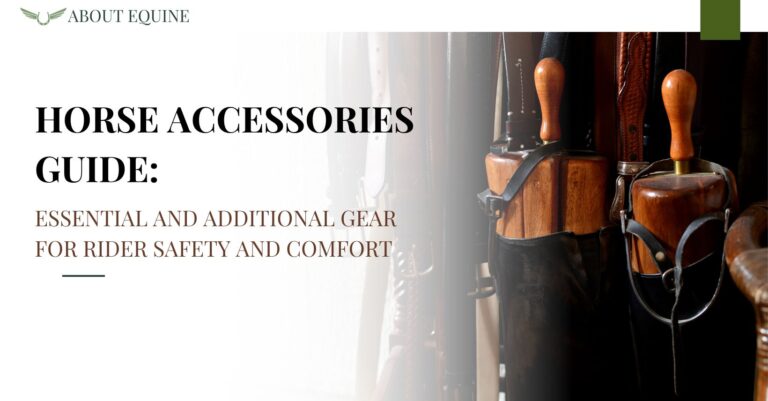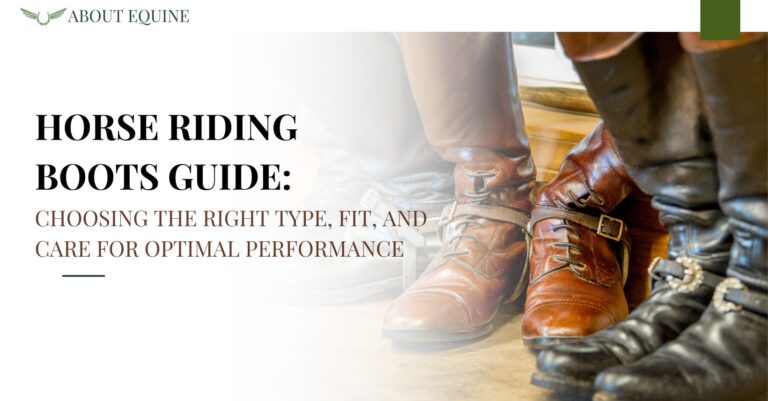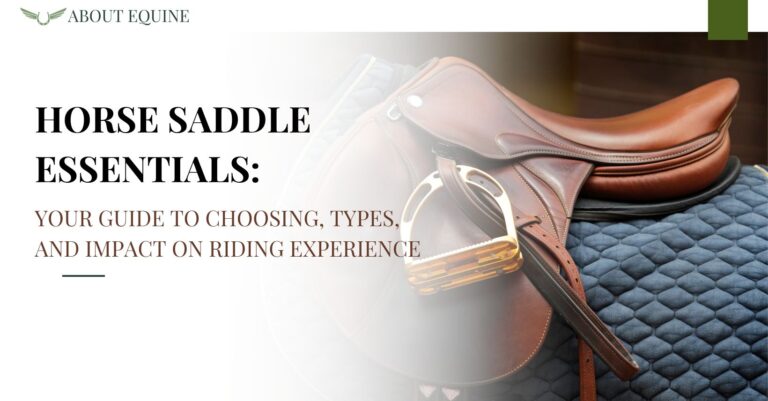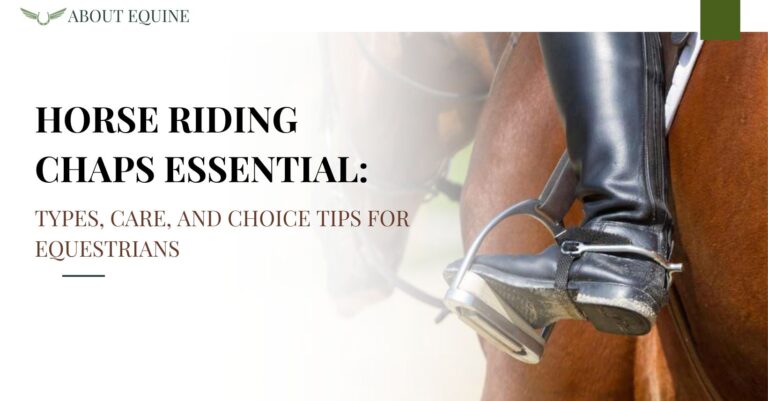Ride On Horse: Mastering the Art of Horse Riding from Basics to Safety and Confidence Building
Have you ever dreamt of gracefully riding a horse, feeling the wind in your hair as you gallop through fields?
This article will explore the exhilarating world of horse riding, including the different types, such as English and Western riding, and disciplines like dressage and show jumping.
But that’s not all. We’ll also guide you through the essential first lessons in horse riding, helping you build your confidence in the saddle and equipping you with safety precautions and common mistakes to avoid. It’s the start of your journey to becoming a skilled rider.
What is Horse Riding?
Horse riding is the skill of guiding a horse. Riders communicate through signals to direct the animal using reins, legs, body, and hands. This practice dates back centuries, originating in ancient Greek and Roman cultures.
In many societies, horses symbolise grace, freedom, and strength, reflecting a profound bond between humans and animals that transcends mere transportation.
Riders interpret horse behaviour and body language to build trust and establish effective communication, fostering a harmonious connection. With this foundation of understanding, we can explore the various types of horse riding that cater to different styles and preferences.
What Are the Different Types of Horse Riding?
Horse riding encompasses various styles, such as English and Western, each with its unique techniques, attire, and equipment. In English Riding, riders focus on elegance and precision, while Western Riding emphasises comfort and stability.
English Riding
English Riding, known for its grace and precision, involves riding horses with specific English-style saddles and bridles. Riders often carefully groom their horses, using tools like body brushes and mane-and-tail combs to maintain their appearance.
Proper tack and equipment play a vital role in English Riding. The saddle is a key component designed to provide stability and comfort to the rider. The harness, which includes the bit and reins, allows the rider to communicate effectively with the horse. Riders use specialised stirrups and girths to ensure a secure fit.
Grooming techniques are essential in English Riding to keep the horse healthy and presentable. Tools such as dandy brushes and curry combs help remove dirt and debris from the horse’s coat. Mane-and-tail brushes detangle and maintain the horse’s mane and tail.
Western Riding
Western Riding focuses on comfort and stability, with riders using Western-style saddles and neck straps for control. Equipment like dandy brushes, hoof picks, and rubber curry combs are essential for maintaining the horse’s well-being.
In Western Riding, the saddle is vital in providing the rider with a comfortable and secure seat. It is designed with a deep seat and high cantle for stability during manoeuvres. Using neck straps allows riders to have an additional point of contact for steering and reinforcement of cues.
Grooming tools such as super brushes help remove dirt and loose hair, while hoof picks ensure the cleanliness and health of the horse’s hooves. Rubber curry combs aid in massaging and loosening dirt on the horse’s skin for a shiny coat.
Dressage
Dressage is an equestrian art form that focuses on the precise execution of movements and exercises by the horse and rider. Riders pay attention to details like numnahs, girths, and plastic grooming brushes while emphasising the groundwork for a solid foundation.
Communication is key in Dressage, as the rider must clearly convey their intentions to the horse through subtle cues and body language. Gentle hands and a balanced position come into play here, ensuring a harmonious connection between the two. Techniques such as half-halts and leg yields refine the horse’s responsiveness and obedience. Dressage whips and spurs are common to provide precise aids and signals during training sessions.
Show Jumping
Show Jumping is a thrilling equestrian event in which a horse and rider navigate a series of obstacles at speed. It offers riders the benefits of exercise, confidence-building, and the opportunity to showcase their skills in competitive settings.
The adrenaline rush of successfully clearing a jump, the camaraderie among fellow riders, and the strategic approach required in Show Jumping make it a captivating sport. Riders must develop a strong bond with their horses, understand their nuances, and communicate effectively during the course. This partnership greatly enhances the rider’s mental acuity and emotional connection to the horse. Endless hours of training go into perfecting the technique, agility, and timing needed to triumph in the ring, all while balancing grace and speed.
Cross Country
Cross Country riding challenges horse and rider through varied terrain and obstacles, enhancing skills and building trust. This activity instils valuable lessons in safety, emphasising the need for proper protective gear and an understanding of the horse’s abilities.
The thrill of facing natural elements together fosters a strong bond. At the same time, the diverse challenges sharpen mental and physical agility. Through these experiences, riders learn their capabilities and limitations, paving the way for more advanced lessons.
Speaking of advancement, have you ever wondered what the first lessons in horse riding entail?
What are the first lessons in horse riding?
For beginners in horse riding, the initial lessons typically focus on grooming the horse, learning how to tack up with saddle and bridle, and the essential steps for mounting and dismounting safely. These foundational lessons establish a strong emphasis on safety and build confidence in handling the horse.
Riders must start with a well-groomed, tacked-up horse to ensure a comfortable and safe riding experience. Grooming involves brushing the horse to clean its coat, mane, and tail. Tacking up includes correctly placing the saddle pad, saddle, and bridle on the horse, ensuring that everything fits properly for the horse’s comfort. Once the horse is prepared, riders learn the correct techniques for safely mounting and dismounting, which involves proper positioning and balance.
Grooming and Tacking Up
Grooming and tacking up are essential steps in preparing a horse for riding. It involves using tools like body brushes, saddle blankets, and bridles to ensure the horse is comfortable and ready for the ride.
For grooming, body brushes are used to remove dirt and loose hair and distribute natural oils, promoting a healthy coat and skin for the horse. Proper fitting of the saddle blanket is important as it provides cushioning and protects the horse’s back during the ride. Selecting the right bridle is important to communicate effectively with the horse through reins and bits.
Preparing the horse physically involves checking its hooves, ensuring they are clean and trimmed, and checking for any signs of discomfort. Mentally preparing the horse involves building trust and rapport and establishing a positive connection before commencing the ride.
Mounting and Dismounting
Riders must learn to mount and dismount a horse correctly. Proper techniques involve using the right hand and left leg to mount and dismount smoothly and safely, ensuring a comfortable experience for both the rider and the horse.
When mounting, it’s essential to approach the horse calmly, maintaining control and confidence. Place your left foot in the stirrup and push yourself up while swinging your right leg over the horse’s back, landing gently in the saddle. Remember to adjust your position to ensure balance and comfort.
Communication with the horse is key when dismounting. Cue the horse to stand still before carefully sliding your right foot out of the stirrup and lowering yourself down smoothly, facing the horse’s shoulder. By following these steps diligently, riders can establish a strong bond and trust with their equine companions.
Basic Riding Techniques
Mastering basic riding techniques requires understanding how to use your legs, reins, and body to communicate effectively with the horse. Riders learn to walk, trot, stop, and turn, acquiring essential skills for a successful ride.
Mastering leg cues is important for guiding the horse’s direction and speed through subtle pressure and positioning. This enables riders to convey intentions without relying solely on the reins. Effective rein management is also key, as riders need to maintain the right tension, release, and direction to steer and communicate effectively.
Body positioning is equally important. Riders must maintain a balanced and centred posture to sync with the horse’s movements. Adjusting weight distribution and alignment helps influence the horse’s balance and direction, facilitating smooth transitions between gaits and manoeuvres.
With these fundamentals in place, the next step is to develop the confidence to apply them consistently…
How to Build Your Own Confidence in Horse Riding?
Building confidence in horse riding is a transformative journey that enhances your skills and serves as a mood booster and therapeutic activity. Each lesson and experience of riding on horseback improves mental well-being and self-assurance.
When you connect with a horse, a unique bond forms, facilitating emotional growth and empathy. The gentle rhythm of horseback riding can soothe anxieties and promote relaxation, offering a much-needed escape from the hustle and bustle of daily life. Physical activity in riding releases endorphins, often called ‘feel-good hormones,’ which can uplift your mood and greatly reduce stress levels.
Regular Practice
Regular practice is key to mastering horse riding skills and ensuring safety while reaping this activity’s physical and mental benefits. It enhances confidence, improves fitness levels, and deepens the bond between rider and horse.
Consistency in horse riding practice is important for skill development. It plays a vital role in creating a safe and enjoyable riding experience. By dedicating time to practise regularly, riders can improve their balance, coordination, and overall riding technique. This steady commitment helps riders build muscle strength and endurance, benefiting their physical health and mental well-being.
Understanding Horse Behaviour
Riders must understand horse behaviour to build a harmonious relationship with these animals. Groundwork and observation are important in ensuring ride safety and creating a positive experience for the rider and the horse.
When engaging with horses, it’s important to establish trust and clear communication through effective groundwork techniques. By interpreting the horse’s subtle cues and body language, riders can anticipate their reactions and respond appropriately, fostering a strong bond.
Safety precautions, such as proper handling and maintaining a calm demeanour, are paramount in preventing accidents and building the horse’s confidence. Observing the horse’s behaviour allows riders to customise their approach, address any concerns or stressors, and adapt their training methods accordingly.
Setting Goals
Setting achievable goals is essential for progress in horse riding. You should break down your riding objectives into manageable steps that align with your skill level and your horse’s abilities.
Realistic goals boost your confidence and motivate you as you advance in the equestrian field. Beginners should focus on mastering basic skills such as mounting, dismounting, walking, trotting, and maintaining proper posture to build a strong foundation. Alongside these goals, it’s equally important to remember some essential guidelines for staying safe while riding.
What Are the Safety Precautions for Horse Riding?
Ensuring safety during horse riding is paramount to protect both the rider and the horse. By following proper safety precautions, riders can enjoy the benefits of this exhilarating activity while minimising risks and enhancing the overall riding experience.
One of the most crucial safety measures is to always wear a helmet while horse riding. Helmets can significantly reduce the risk of head injuries in case of falls or accidents, providing essential protection for riders.
Using appropriate tack such as saddles, reins, and stirrups is vital to ensure a secure and comfortable riding experience. It is essential to inspect all tack regularly and ensure it is in good condition to prevent accidents or discomfort for both the rider and the horse.
Proper mounting and dismounting techniques are also critical for rider safety and preventing injuries. By following these guidelines, riders can strike a balance between thrill and safety, making each ride a rewarding and enjoyable experience.
Always Wear a Helmet
Wearing a helmet is a non-negotiable safety measure for riders of all levels, from beginners to experienced equestrians. It provides crucial protection in case of falls or accidents, reducing the risk of head injuries during horse riding activities.
There are several types of helmets available on the market, including traditional English helmets and Western-style hats with built-in protective features. The key to ensuring maximum safety is choosing a helmet that meets safety standards and fits securely on the rider’s head.
The fitting guidelines are paramount to the effectiveness of the helmet – it should sit snugly without tilting forwards or backwards. An ill-fitting helmet can compromise its protective capabilities, so it’s essential to regularly check and adjust the fit.
Helmets play a significant role in preventing head injuries, with studies showing that they can reduce the risk of head trauma by up to 50%. The equestrian community emphasises the importance of wearing helmets that comply with safety regulations such as ASTM or SEI certification.
Use Proper Tack and Equipment
Using proper tack and equipment is essential to ensure a safe and comfortable riding experience for both the rider and the horse. Well-fitted saddles, bridles, and other gear not only enhance control but also prevent accidents and discomfort during rides.
Regarding selecting the right gear, it’s crucial to consider the individual needs of both the rider and the horse. Proper fitting is key to avoid chafing, rubbing, or even injuries to the horse during long rides. Regular maintenance of tack is equally important to ensure durability and safety.
- Checking for signs of wear and tear
- Regular cleaning and conditioning
- Proper storage to prevent damage
Safety gear such as helmets and protective vests should never be compromised, as they can make a significant difference in preventing serious injuries in case of falls or accidents on horseback.
Follow Proper Mounting and Dismounting Techniques
Mastering the techniques for mounting and dismounting a horse correctly is crucial for ensuring rider safety and horse comfort. By using the right hand and left leg in coordinated movements, riders can execute smooth transitions before and after each ride.
When preparing to mount a horse, approach the animal calmly and confidently. Position yourself at the horse’s left shoulder, facing towards the rear. Ensure the horse is standing still and relaxed before attempting to mount. Place your left hand on the pommel of the saddle and grab a handful of mane with your right hand for stability.
When swinging your right leg over the horse’s back, maintain control by keeping your weight balanced and using your core muscles. Once seated, adjust your stirrups and reins to the desired length before asking the horse to move forward.
What Are Some Common Mistakes to Avoid in Horse Riding?
In the journey of horse riding, beginners often make common mistakes that can impact their safety and learning progress. By being aware of these errors and actively avoiding them, riders can enhance their skills, build confidence, and ensure a positive riding experience.
One of the frequent mistakes novice riders make is insufficiently warming up before riding. Proper warm-up routines help prepare both the rider and the horse for the session, reducing the risk of injuries and ensuring a smoother experience.
Many beginners tend to hold the reins too tightly, which can lead to discomfort for the horse and communication issues. It’s crucial to maintain a gentle contact with the reins, allowing for clear signals without unnecessary tension.
The Path to Becoming a Skilled Rider
Becoming a skilled rider requires dedication, continuous training, and a passion for the equestrian art. With each lesson, experience, and ride on horseback, riders progress in their skills, build confidence, and enjoy the physical and mental benefits of this rewarding activity.
For those starting out, the journey may seem daunting, but with perseverance and commitment, noticeable improvements become evident over time. It’s crucial to establish a solid foundation of riding basics, such as posture, balance, and communication with the horse. As riders, individuals develop a connection with their equine partner, learning to anticipate each other’s movements and communicate effectively without words.
